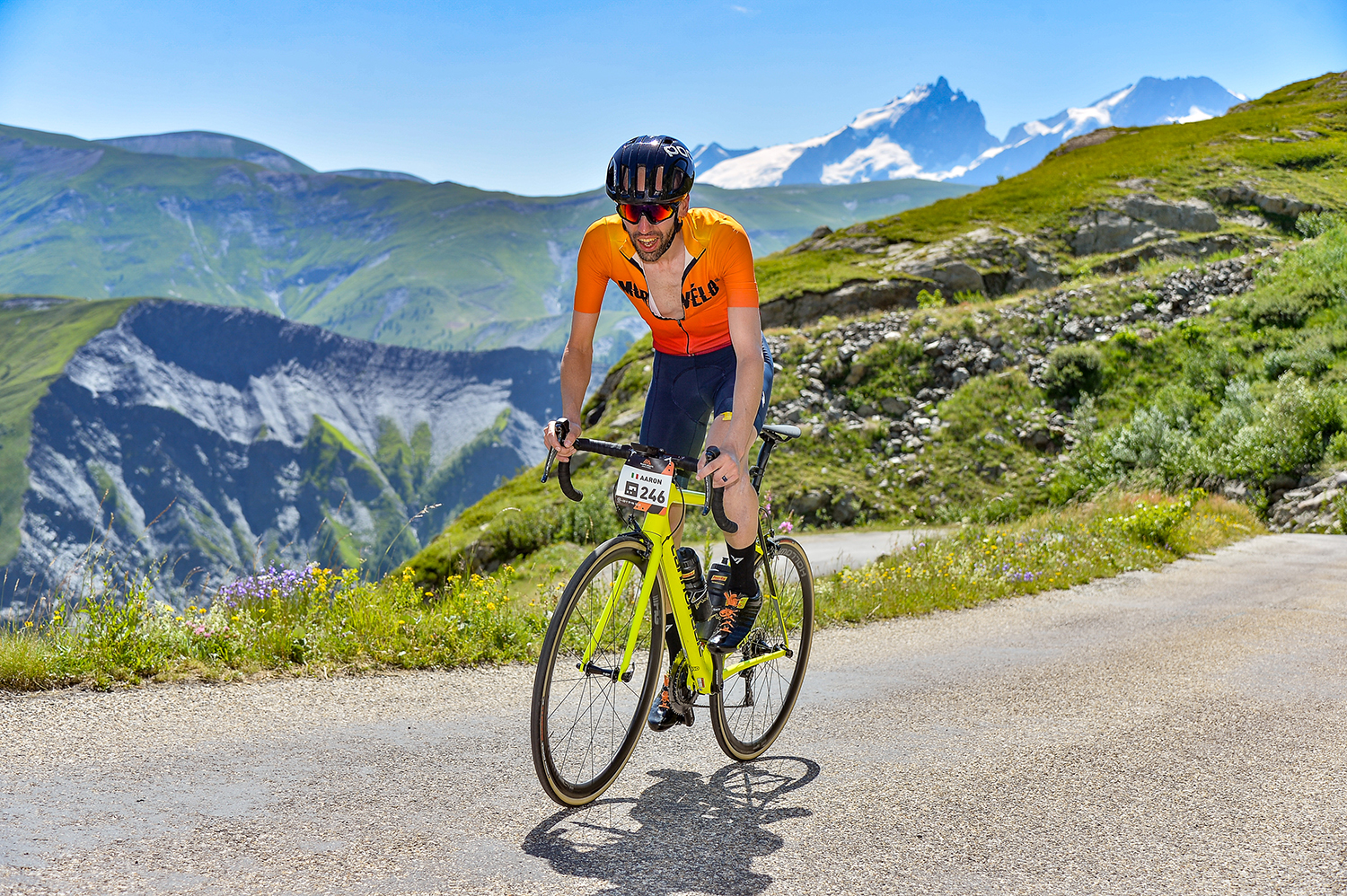Cyclingnews Verdict
Pros
- +
Realistic ride feel
- +
Accurate, reliable power metrics
- +
Wi-Fi connectivity and automatic firmware updates
- +
Can be used without mains power
- +
Odometer
Cons
- -
Cassette/driver body should be specifiable from purchase
- -
The leather grab handle lacks the sturdiness of rivals
- -
Intermittent cadence spikes (now resolved)
You can trust Cyclingnews
- Weight: 17.1kg (actual)
- Connectivity: Dual Bluetooth, Direct Wi-Fi connectivity. ANT+ FE-C and Bluetooth FTMS
- Accuracy: +/-1%
- Max power: 2,400-watts
- Max grade: 24%
- Freehub compatibility: Shimano 9/10/11/12-speed road cassettes, Shimano 12-speed MTB, Campagnolo 9/10/11/12-speed, SRAM NX 12-speed with Shimano body and SRAM 12-speed (with XD/XDR body)
Elite is one of the pioneers in the best smart trainer space, having produced many reliable and accurate models over the years, including the venerable Direto, which was, until recently, the company’s top-of-the-line model. Although the Direto is still available in XR-T guise, a powerful and more accurate smart trainer assumed the top step in 2022 – the Justo.
Its reign lasted just two years before a bigger flywheel, new software and improved electronics ushered in the Justo 2 in a move to bring it in line with arch rival, the Wahoo Kickr V6. Armed with an impressive list of specifications and bold accuracy claims, it was selected by the UCI as the official unit for the Cycling eSports World Championships finals held on MyWhoosh in Abu Dhabi last year.
Design and aesthetics
Visually, Elite has knocked things out of the park. Compared to the Wahoo Kickr V6 and Tacx Neo 3M, the Justo 2 is radically more detailed in terms of design, with solid geometric shapes creating a sculptural appearance. I appreciate the use of mixed materials and colours - black, silver and chrome dominate its facade - the result of which has created an interesting contrast that accentuates the overall construction. It remains practically unchanged from the original Justo, save for a solitary Justo 2 logo that helps tell it apart from its predecessor.
Despite its dynamic appearance, the silver body of the Justo 2 can easily show up grease and chain fallout, so, as a best practice, I’d suggest wiping it down once a week to avoid buildup and discolouration over time.
While no Elite smart trainer has been particularly easy to move around, let alone pick up, the Justo 2 gets a leather strap mounted to the top of the trainer body. The strap is strong and sturdy, but its placement on the unit, not to mention its 17.1kg weight, means it's a struggle to pick up and move around. To this end, the Wahoo Kickr V6 has this area sorted with a sturdier grab handle mounted centrally on the top. This, however, is certainly not a dealbreaker.
Unlike the Justo, the Justo 2 comes standard with a Shimano 105 12-speed cassette. While this is a nice addition for 12-speed Shimano users, if you’ve got a SRAM, Campagnolo or 11-speed Shimano groupset, you will need to fit a new cassette at your own expense. That said, the freehub is designed to accommodate a broad spread of cassette options, including Shimano 9/10/11/12-speed road cassettes, Shimano 12-speed MTB, Campagnolo 9/10/11/12-speed, SRAM NX 12-speed with Shimano body and SRAM 12-speed (with XD/XDR body).
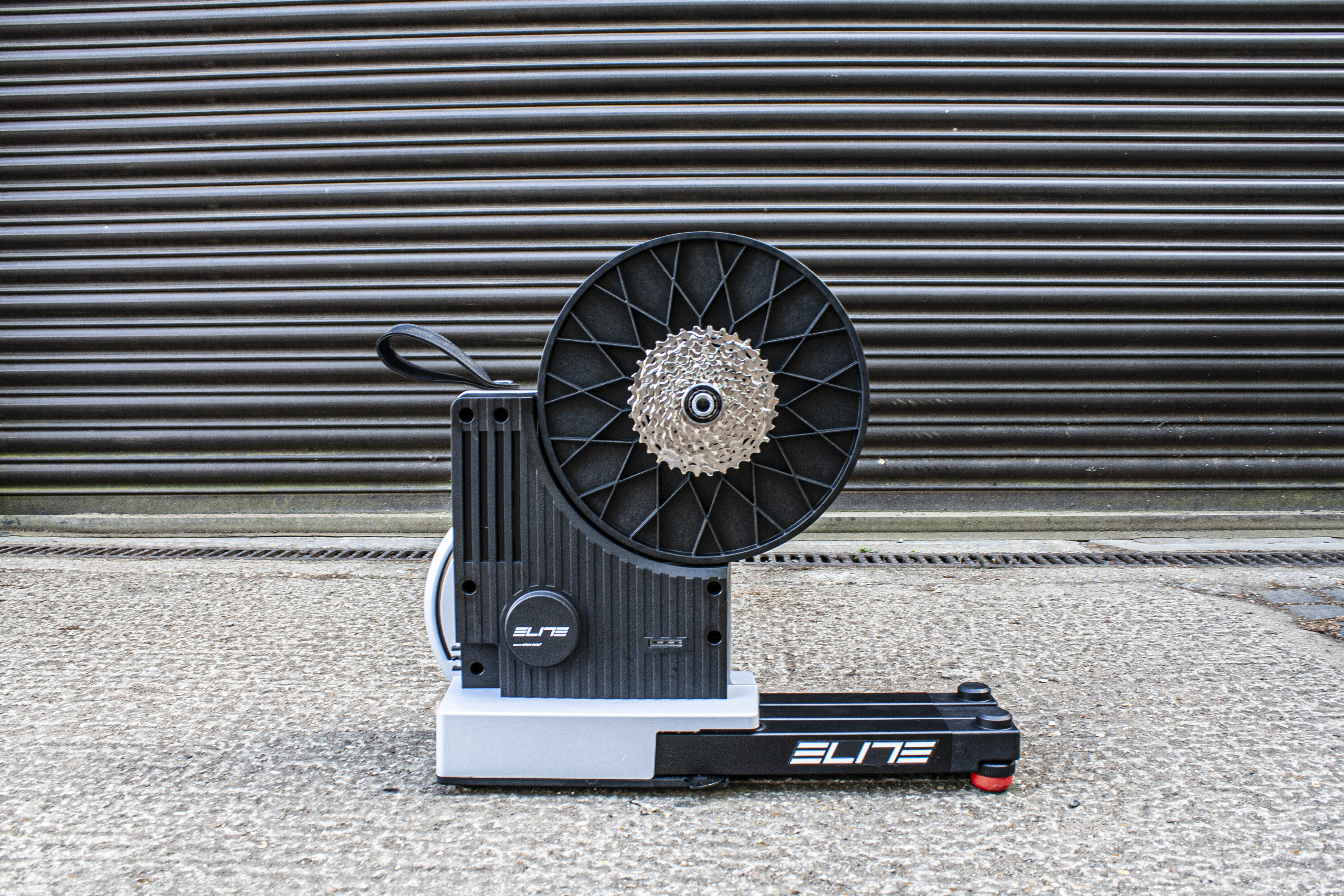

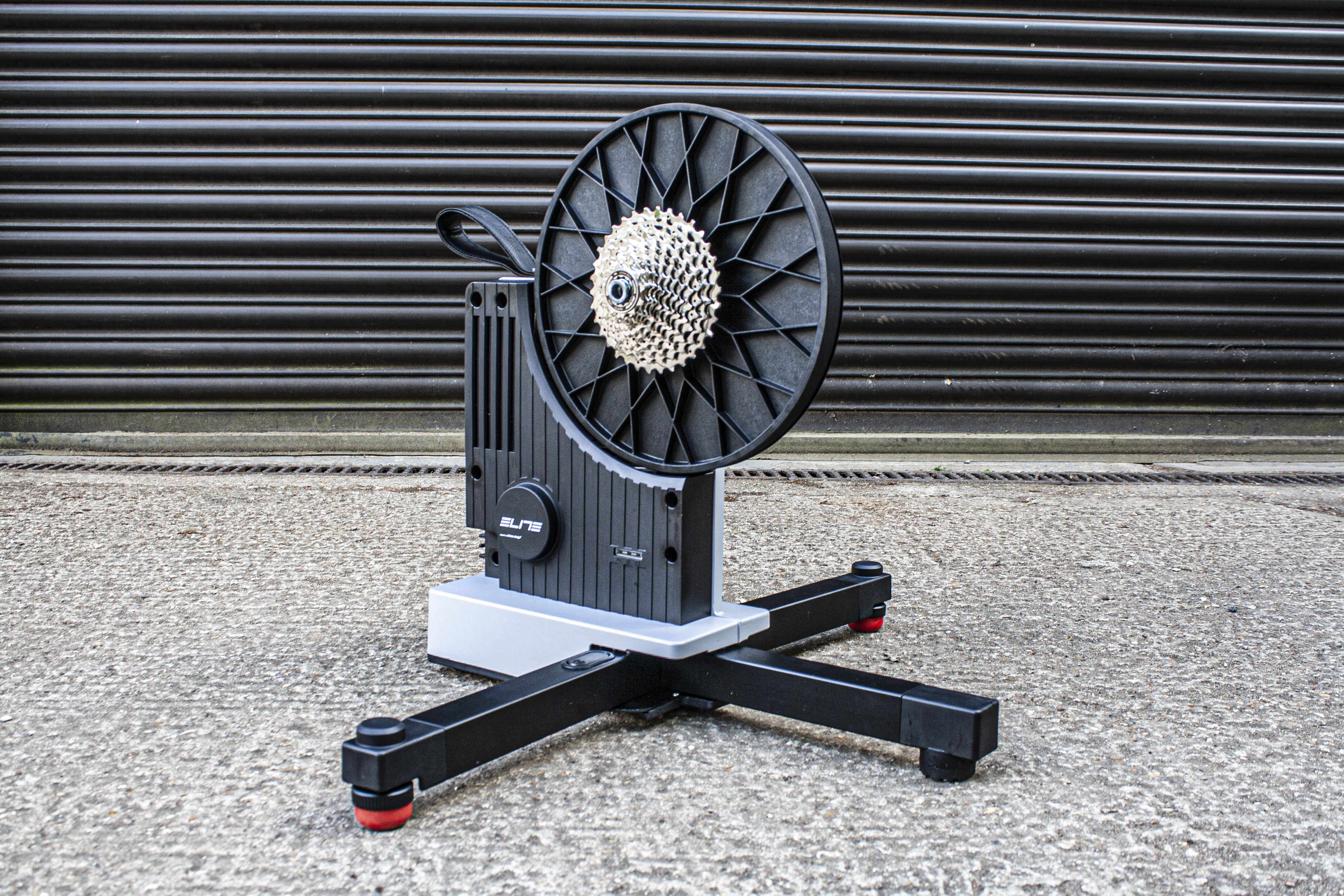
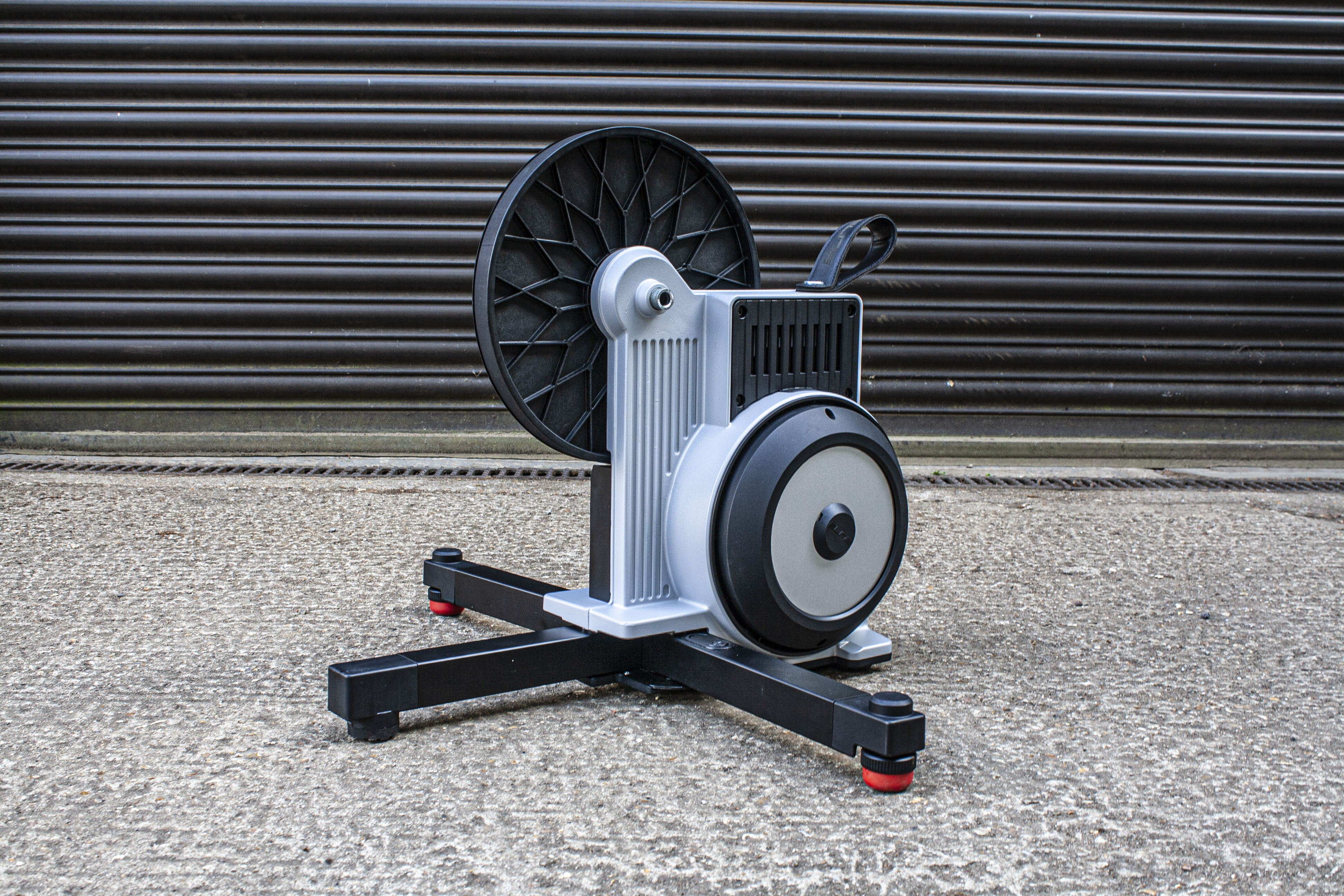
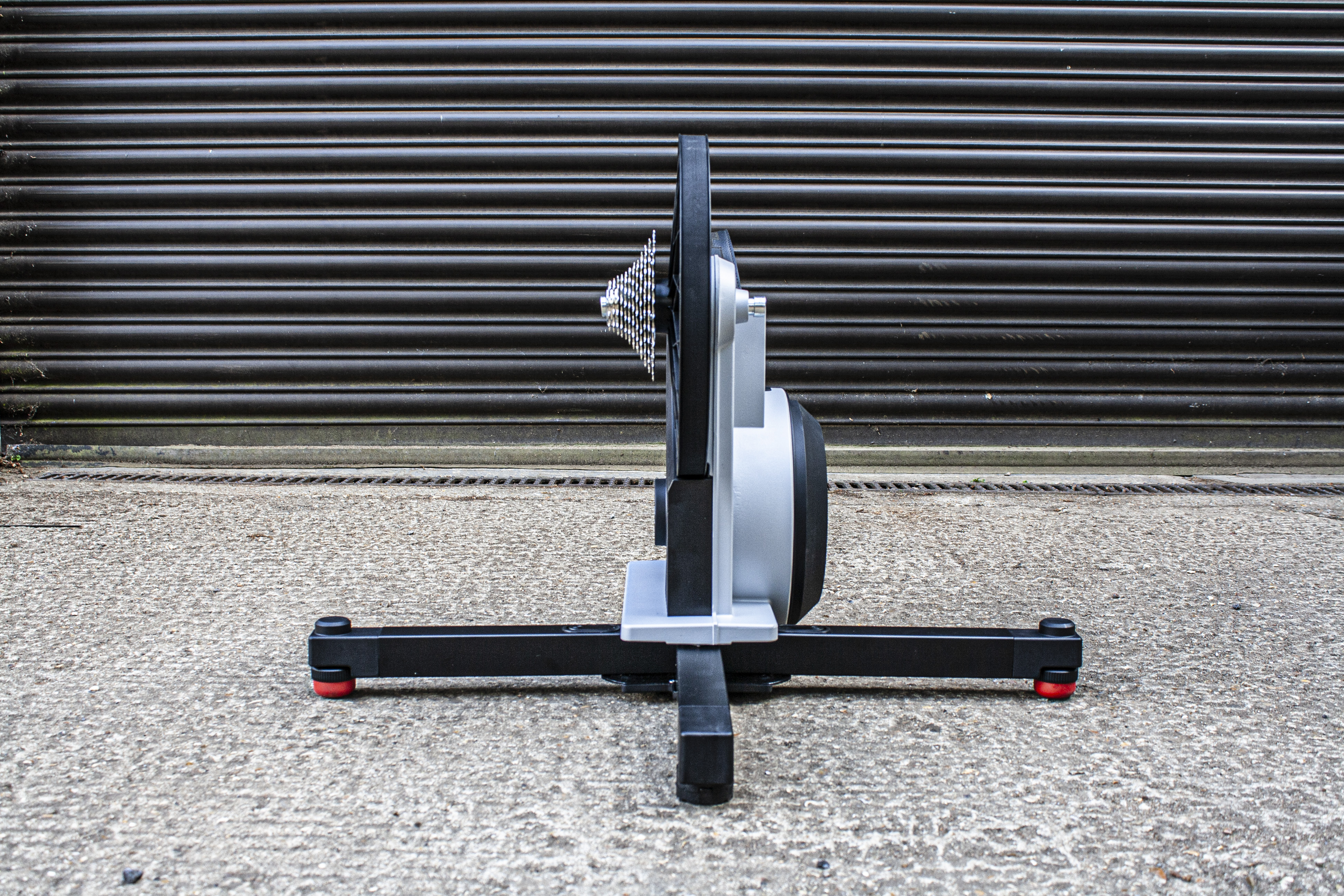

Specifications
The changes between the Justo 2 and its forebear are considerable and go deeper than merely a new sticker and 12-speed cassette. The main difference comes in the form of a bigger flywheel. At 7.2kg, it’s heavier than the Justo (6.2kg) and Direto XR-T (5.1kg) but falls marginally short of the Wahoo Kickr V6’s 7.25kg flywheel – we’re talking 50g here.
The latest race content, interviews, features, reviews and expert buying guides, direct to your inbox!
Other specifications worth noting is the built-in Wi-Fi connectivity for faster data transfer and automatic firmware updates. Like the Justo, the Justo 2 has a maximum accuracy deviation of +/-1%. Gradient simulation is rated at 24% while max power is 2,400w. It also benefits from what Elite calls a Fast Track function, which can be toggled on or off in the My E-Training application. Like Wahoo’s Race Mode function, it transmits data at a frequency of 10Hz, meaning metrics such as power, speed, and cadence data are broadcast to Zwift, MyWhoosh and other virtual cycling apps 10 times per second versus the standard 1 Hz.
For competitive eSports athletes, the higher transmission rate (provided you’re not impacted by a slow connection) will result in super-responsive data for racing. To counteract the likelihood of a poor Wi-Fi signal, you can always use the Elite Gateway dongle, which provides a wired connection to your router for a stable, more reliable connection.
Another feature many will find useful is the ability to use the Justo 2 without software and mains power. This will appeal to road racers and time trialists wanting to warm up before an event. There are two stand-alone modes without being connected to software or a power source. One allows you to simulate road rides with preset incline values (up to 24%) while plugged in but disconnected, while the other lets you set resistance levels (1-16) without mains power.
From a compatibility perspective, the Elite Justo 2 can accommodate most contemporary bike frames, including rim and disc brakes. Included in the box are a host of rear axle brackets and adaptors to ensure it plays nicely with 142 x 12mm thru-axle and 130-135 x 5mm quick-release options. Additional adaptors are available for bikes with 135 x 10-12mm, Specialized SCS 135 X 12mm, Boost 148 x 12mm and Super Boost 157 x 12mm hubs.
Setup
The Justo 2 is ready to ride out of the box and is straightforward to assemble. If you’re a current user of an Elite smart trainer, you won't have any issues as the unit follows the same triple-leg layout of its stablemates as well as the same power cable.
You’ll need to install the correct thru-axle adaptors before fitting your bike – for me, this was a Cannondale Systemsix. It’s all very easy and shouldn't take you long. The flywheel positioning and general design of the Justo 2 also means you won’t have any issues with caliper clearance, as there’s ample space for the non-drive side.
The trainer comes with two Flex Feet options that Elite says “replicate the natural bike oscillation during your workouts and provide an optimised riding experience tailored to your cycling morphology.” That statement is quite a stretch, as while there is a certain degree of flex, it’s not as noticeable as Elite suggests. The Justo 2 comes out of the box with the Red Flex feet allowing a 7-degree lateral micro-oscillation. The black set provides an oscillation of 4.5-degrees but will need to be fitted by the user.
My indoor set-up might be somewhat different from the norm comprising a Saris MP1 Nfinity Motion platform (a rocker plate). I use the MP1 for two reasons: it replicates the natural riding movement (fore/aft and side-to-side) and allows me to strap the trainer down via three Velcro straps – this provides a solid platform from which to pedal and sprint.
That said, having tested the Justo 2 without the MP1, the unit’s large footprint and 17.1kg weight (actual) ensure it stays planted on the floor. That said, I know from personal experience and racing that some riders go as far as to place dumbbells or sandbags on the legs, but this is not smart trainer specific, but rather an issue all trainers suffer from in high-power sprinting situations.




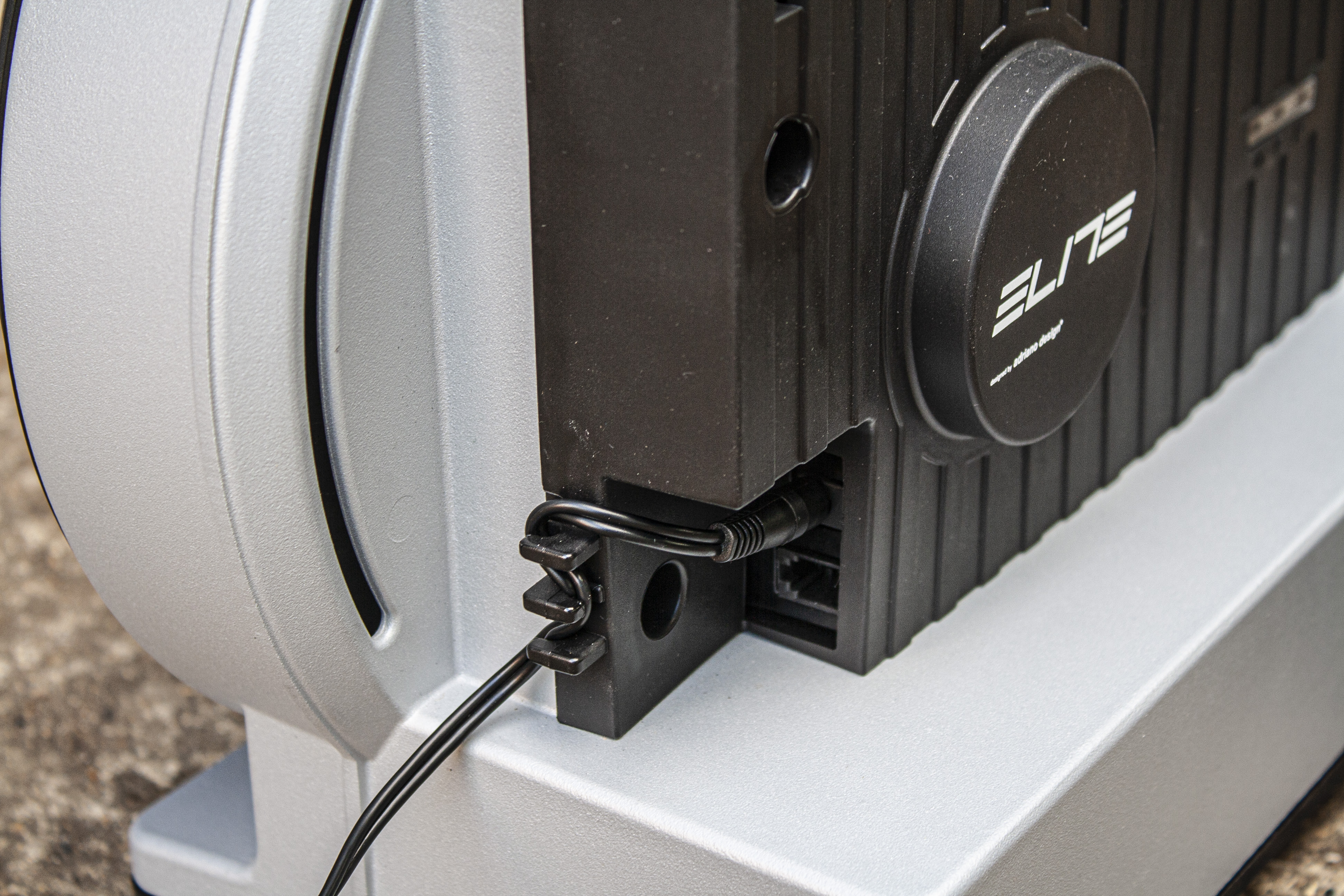
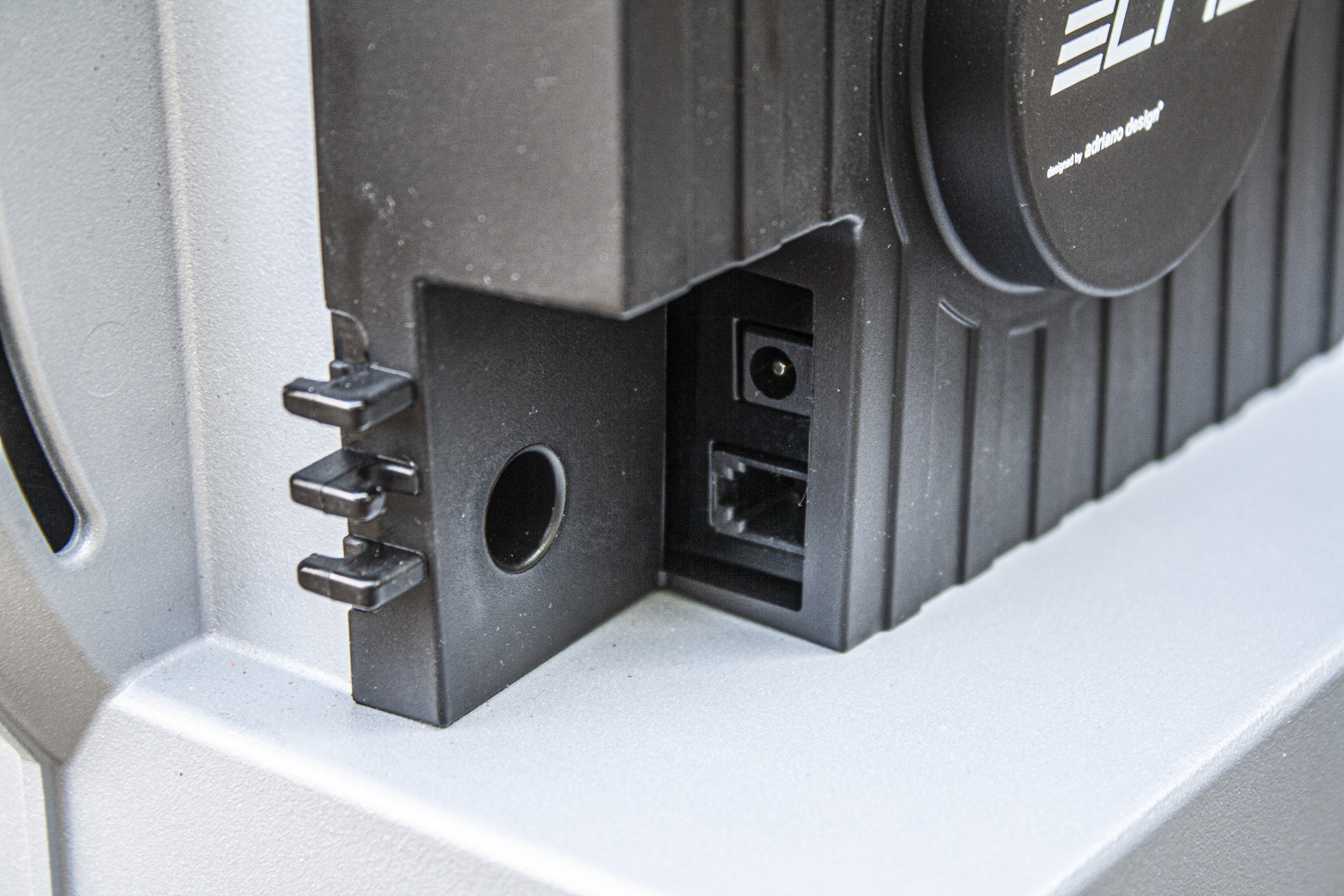

Performance and accuracy
The Elite Justo 2 performs and rides very smoothly. The 7.2kg flywheel means the ride feel is similar to the Kickr V6. It’s significantly quieter than the Kickr V6 and other Elite trainers, which might appeal to users who share a space or live in apartments with poor noise insulation.
The Justo 2 reacts instantly and feels realistic in its response to gradient resistance and gearing when riding in simulation mode on Zwift and MyWhoosh – and this goes across the entire gear range, high and low speed. It performs well in ERG mode on Zwift and the My E-Training app. While I didn’t use ERG much, the trainer’s four-power smoothing options and Easy Start function make for an incredibly smooth and accurate experience, granted you can maintain the required cadence target.
Looking at the internal hardware, the Justo 2 ditches strain gauges for an optical torque sensor (OTS) to measure power, which Elite claims is accurate to a maximum deviation of +/-1 %. The OTS measures the torque applied to the crankarms and converts this data, often in combination with cadence, into a power reading.
My testing protocol is thorough. It involves a series of intervals, max power tests and online races to see how it performs in both a controlled and dynamic setting, as well as cross-referencing the data with a secondary power source to validate accuracy. While the Justo 2 has an auto-spindown feature and calibrates itself to ensure optimal performance, I used the My E-Training app to calibrate the trainer before all my testing – this was done after a 10-20 minute warm-up for accuracy. (As a best practice, I do this after transporting the trainer or moving it from room to room).
To validate the Justo 2’s accuracy, I dual-recorded my sessions with Wahoo Powrlink Zero dual-sided power meter pedals. This has become standard practice for me over the years, as dual recording is a prerequisite for most of the elite racing I do on Zwift (MyWhoosh has a built-in dual-recording protocol and doesn’t require participants to record to a cycling computer).
My first test involved a WTRL TTT on Zwift – a good workout for benchmarking the Justo 2’s accuracy. Team time trials are generally controlled efforts with a consistent cadence and power delivery. The session comprised 6 x 2-minute pull efforts at 380w and a series of easier intervals when recovering in the pace line. In this test, the accuracy between the Justo 2 and Wahoo Powrlink Zero pedals was rock solid and within the claimed deviation of +/-1%. While closer examination showed a slight deviation in power between the trainer and pedals on the shorter-duration intervals - notably the 2.26% difference at five seconds and 1.75% disparity at 15 seconds - the readings from one to 20 minutes were almost exact. A good sign indeed. Looking at the overall numbers, the average, normalized and max power numbers between the Justo 2 and Wahoo pedals were well within the manufacturer's claim.
That said, on the odd occasion while free riding and racing, I did experience some anomalies with the cadence where it would spike from 60rpm to 118rpm and back down to 60rpm. This was accompanied by a power surge which would settle once the cadence returned to normal. This continued for a few weeks until I realised my Justo 2 was not connected to the Wi-Fi in the My E-Training app, and was yet to update the firmware. After enabling this feature, the firmware was updated to version 21, which sorted out the cadence issues for the most part. Occasionally, there’s still a little surge, but settles almost instantly and is barely noticeable. Elite states firmware 21 “enhances auto-calibration stability and ensures reliable performance during training and online races”. That said, the average cadence figures between the Justo 2 (72.9rpm) and Wahoo pedals (73.8%) were close enough with a 1.22% separation, not too bad considering the Justo 2 is bereft of a dedicated cadence sensor and calculates this number based on speed and power data.
The next test involved a scratch race. In this case, the “Zwift Academy Night Race,” an invite-only affair that included the finalists and Mathieu Van Der Poel. Races differ from workouts as they aren’t as controlled, and the on/off nature of the power delivery provides a perfect scenario for testing peak power and the trainer’s ability to react to pedal inputs. Here, the numbers were still close but not as accurate as the steadier TTT, with the biggest deviation being the max power output of 3.08% in favour of the power pedals. Considering drivetrain losses, this deviation is plausible. As the race went on, though, the Justo 2 and Wahoo Powrlink Zero pedals got closer in terms of the power graph and, by the time the race concluded, the average and normalized power figures were within a respective 0.88% and 0.84% of each other.
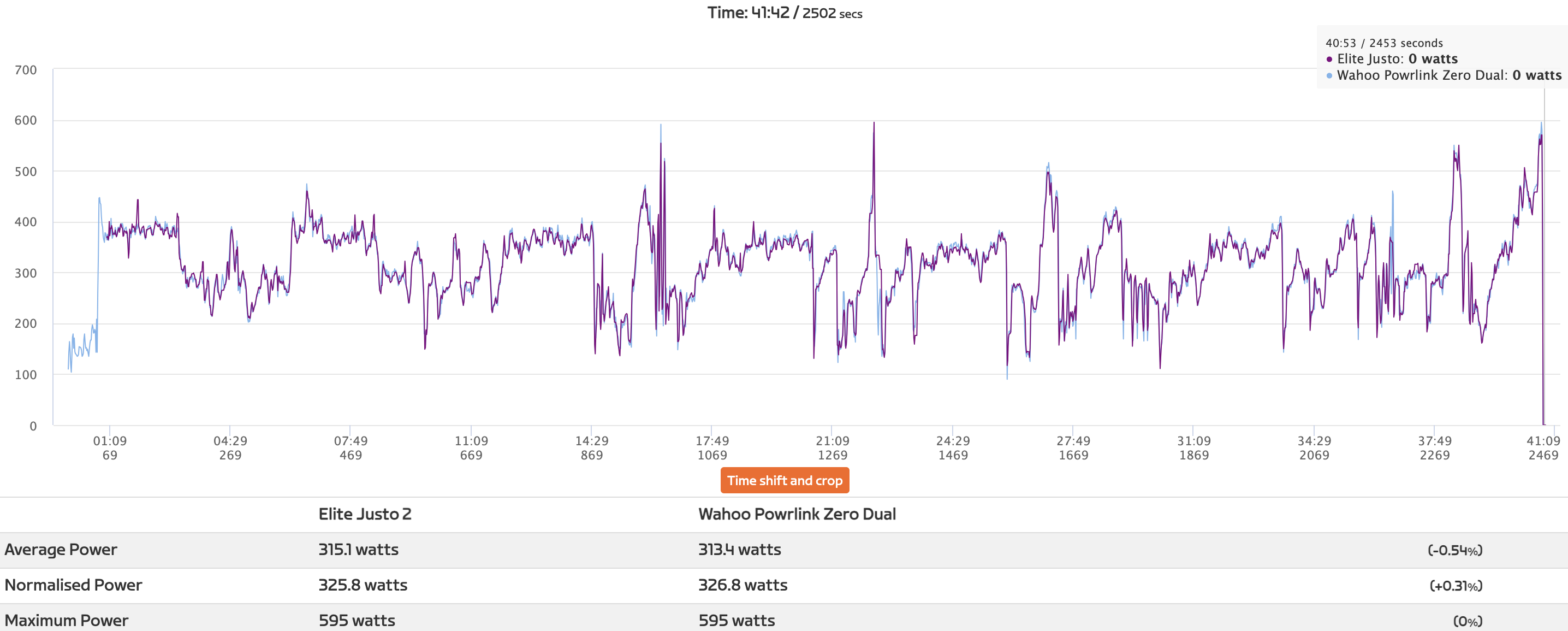
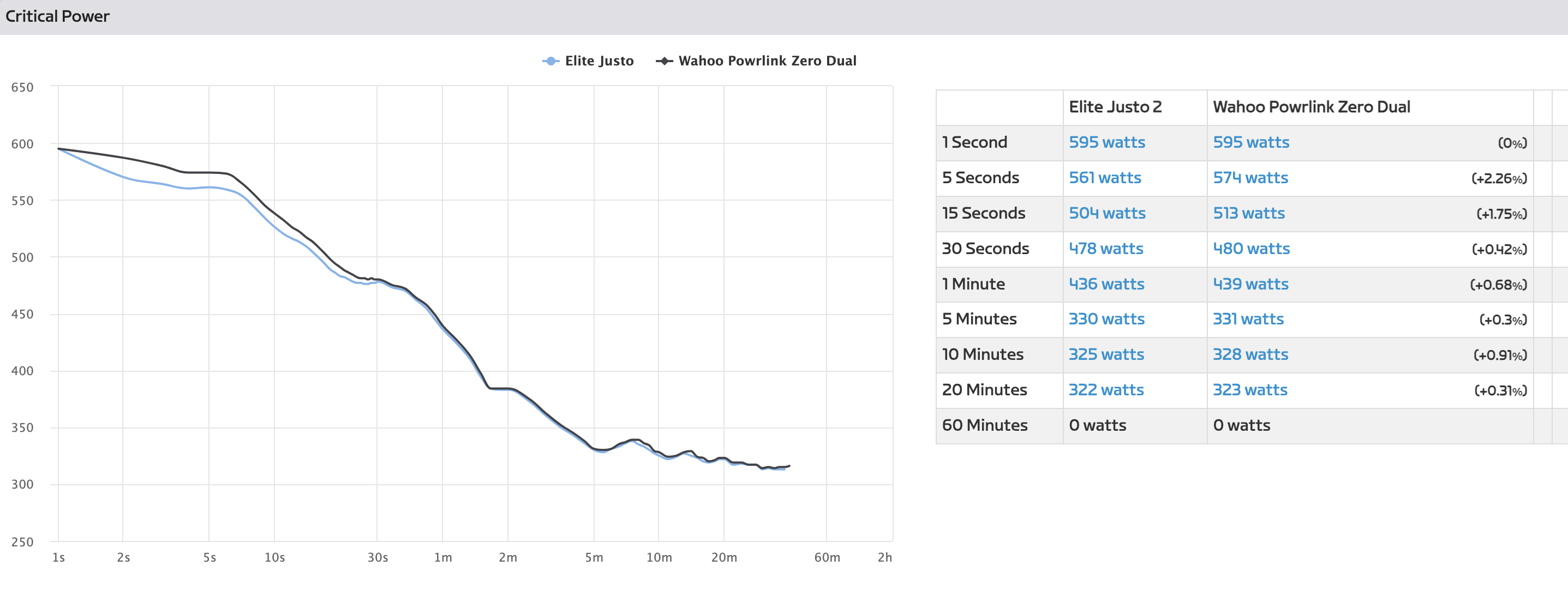
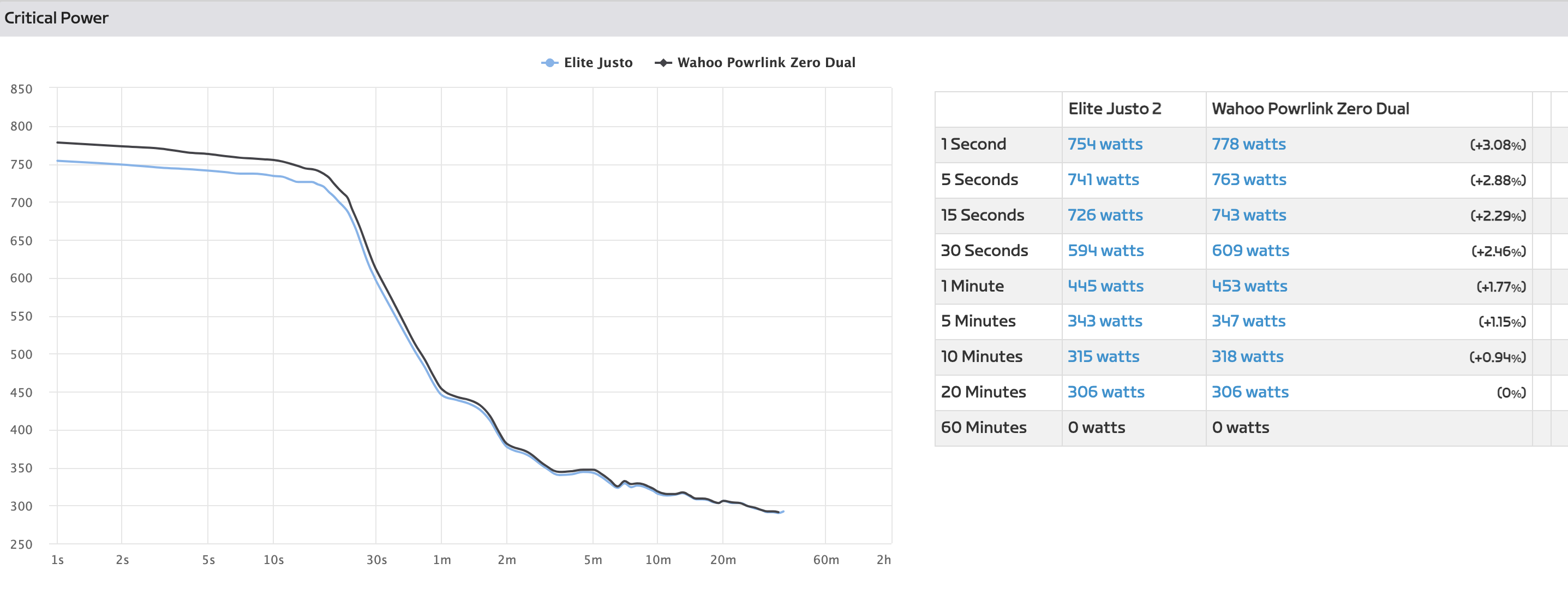

Value
The Elite Justo 2 is by no means an affordable smart trainer, but the £1,099 sticker price seems to be the going rate at this end of the market. Considering some cyclists in the Northern Hemisphere and Europe spend nearly five months of the year training indoors, it should be seen as an investment rather than a spendy outlay. That said, before making a decision, it’s also worth looking at how the Justo 2 fares against its rivals from a specification and pricing perspective.
The biggest threat to the Justo 2 comes from the Wahoo Kickr V6 platform, now available in two guises: the £1,149.99 KickrMove and £899.99 Kickr V6. While the standard Kickr V6 is £199 cheaper than the Justo 2, it’s now nearly three years old. The KickrMove is £51 dearer but gets dual-axis (fore-aft and side-to-side) movement, which provides a realistic and more fluid riding experience. Both Kickrs have heavier flywheels but lose out to the Justo 2’s 24% gradient simulation and a maximum 2,300w power rating.
On the other side of the argument sits the Tacx Neo 3M direct-drive smart trainer. At £1,749.99, it’s the most expensive option in the segment but gets many features that keep it in the conversation. Unlike the Kickr and Justo 2, it has a virtual flywheel that calculates power using magnetic resistance instead of a traditional belt-driven system. It’s rated to within +/-1% power accuracy, can simulate gradients of up to 25% and tops out at a maximum wattage of 2,200w. It also utilises built-in motion plates for a realistic riding feel and can simulate different road types, such as cobblestone and gravel. Unlike the Justo 2, it comes pre-fitted with an 11-speed Shimano cassette and will cost an extra £70 to spec it with another driver body from factory.
For many, the choice will come down to personal preference and whether or not you are a competitive racer on Zwift or MyWhoosh and require a smart trainer able to meet both platforms’ minimum racing requirements. The Kickr V6 is still a quality smart trainer delivering a refined user experience, but finds itself on the cusp of discontinuation. Currently, however, the Elite Justo 2 and Tacx Neo 3M are the newest units on the market and have a longer shelf life. While this means you’re likely to find killer deals on the Kickr V6, if you want to futureproof your indoor training set up and require an accurate smart trainer with a fair asking price, look no further than the Elite Justo 2.
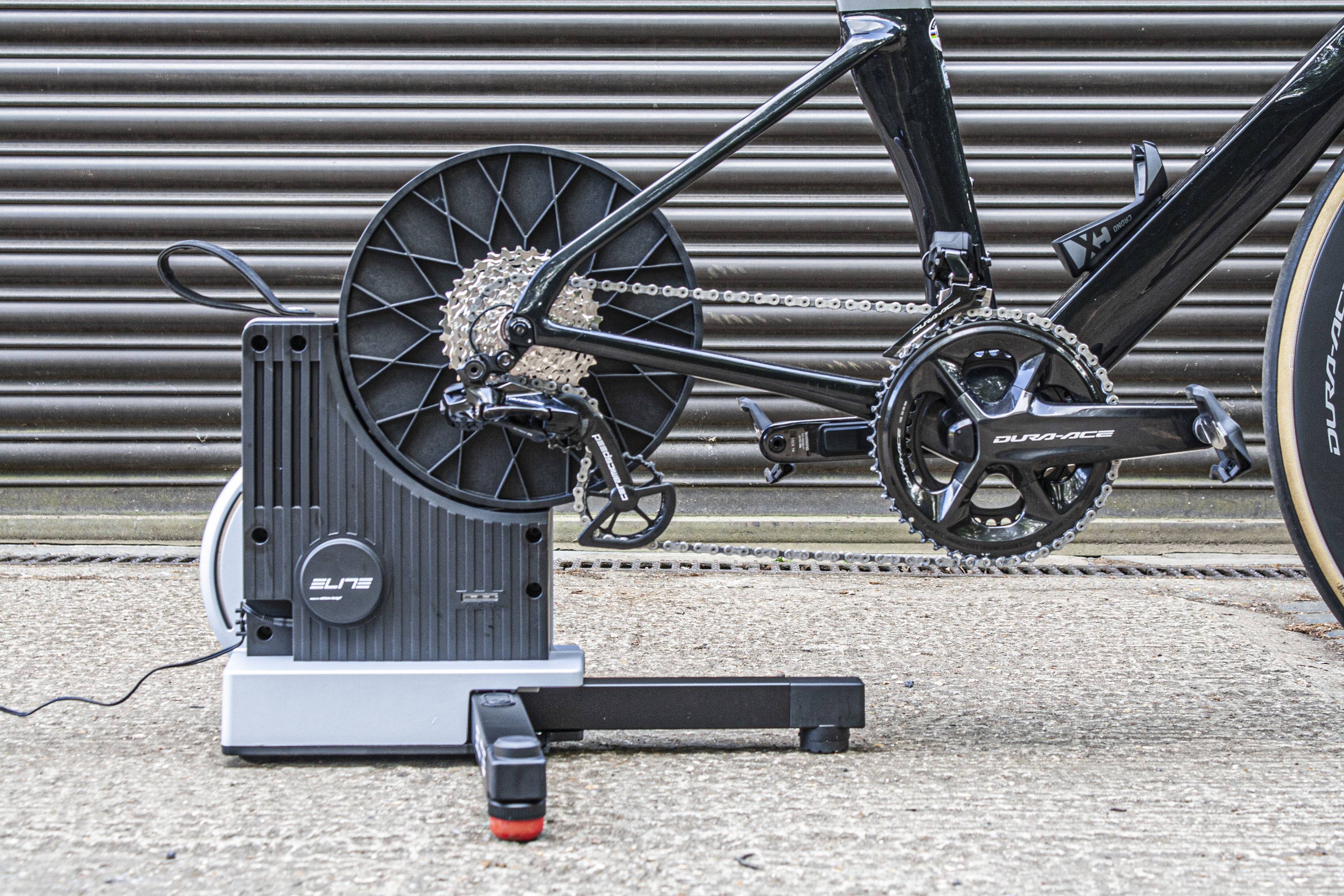
In terms of ride feel, accuracy, bike compatibility, design and pricing, the Elite Justo 2 is the new smart trainer benchmark as it currently stands.
Attributes | Notes | Rating |
|---|---|---|
Ease of Use | Simple set up, especially if you’re a Shimano 12-speed user and familiar with Elite products or smart trainers in general. Easy to pair with the native My E-Training app. | 10/10 |
ERG Mode | The Justo 2’s four-power smoothing options and Easy Start function make for an incredibly smooth and accurate ERG experience. No spiral of death here. | 10/10 |
Ride Feel | The 7.2kg flywheel results in an incredibly realistic and very smooth riding experience . The Red Flex feet allow for 7-degree lateral micro-oscillation, which aids realism and ride feel. | 10/10 |
Power accuracy | Up there with the Wahoo Kickr V6 in terms of power accuracy and my testing spot on with Elite’s claimed deviation of +/-1%. | 10/10 |
Connectivity | The features are par for the course at this level with dual Bluetooth channels for connecting to two devices simultaneously and Direct Wi-Fi connectivity. It also supports ANT+ FE-C and Bluetooth FTMS protocols and can be further boosted by using the Elite Gateway dongle. | 10/10 |
Noise | Super quiet in operation and easily the least obtrusive of all high-end direct-drive smart trainers currently on the market. The Elite Justo 2 peaked at 62 decibels versus the 70 decibels of the Wahoo Kickr V6 (tested together in the same room one after the other – this will vary from setup to setup taking into account room acoustics). | 10/10 |
Stability | At 17kg and with an impressive footprint, the Justo 2 remained stable in most scenarios for the duration of testing. High-power sprints can - at times - unsettle it but this can be solved by strapping it down on a rocker board if you fancy yourself as a sprinter. | 9/10 |
Storability | While the Justo 2 folds away with ease (the legs slot together centrally) and doesn’t take up too much space, the location of the leather grab handle has resulted in an inconsistent weight balance that makes moving it challenging at times. | 8/10 |
Value | As it currently stands, the Elite Justo 2 is the most affordable direct-drive smart trainer available when compared to the Wahoo KickrMove and Tacs Neo 3M. (This excludes the standard Wahoo Kickr V6, which can now be picked up at heavily discounted pricepoints). It’s super-accurate, reliable, sturdy and refined – making it a superb long-term option for those looking to maximise training time as well as compete on Zwift and MyWhoosh racing. | 9/10 |
Total | Row 9 - Cell 1 | 96% |
Aaron was the Tech Editor at Cyclingnews between July 2019 and June 2022. He was born and raised in South Africa, where he completed his BA honours at the University of Cape Town before embarking on a career in journalism. Aaron has spent almost two decades writing about bikes, cars, and anything else with wheels. Prior to joining the Cyclingnews team, his experience spanned a stint as Gear & Digital editor of Bicycling magazine, as well as a time at TopCar as Associate Editor.
Now based in the UK's Surrey Hills, Aaron's life revolves around bikes. He's a competitive racer, Stravaholic, and Zwift enthusiast. He’s twice ridden the Cape Epic, completed the Haute Route Alps, and represented South Africa in the 2022, 2023, 2024 UCI eSports World Championships.
Height: 175cm
Weight: 61.5kg
You must confirm your public display name before commenting
Please logout and then login again, you will then be prompted to enter your display name.
